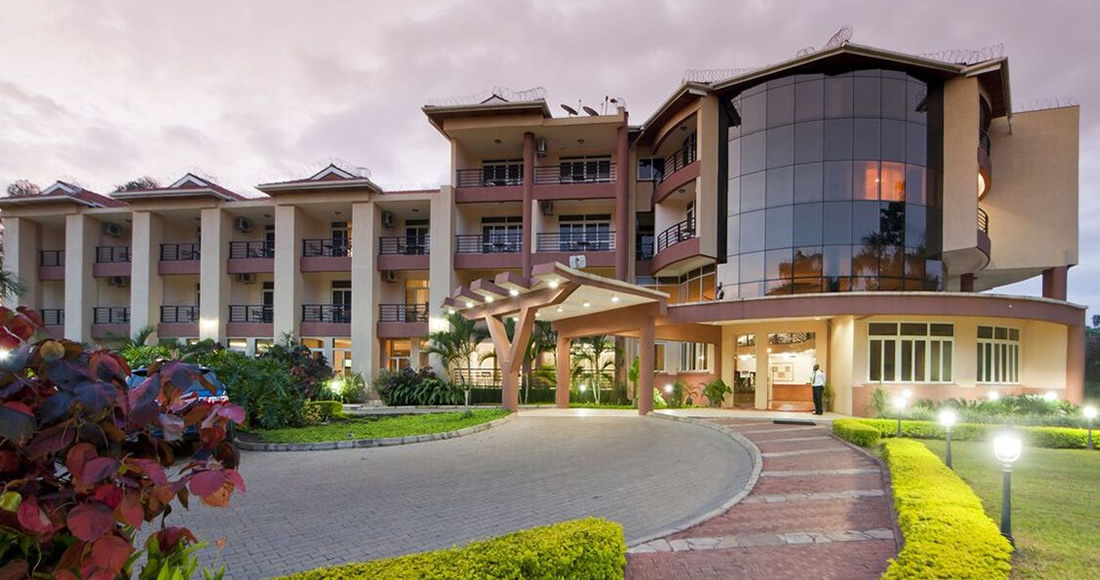
Hidden Dangers of Booking Hotels and Lodges Online
In most cases, tourists book for Hotels or Safari Lodges on the day of visiting the destination which sometimes can be disappointing. However, the trend has changed because tourists are now opting for Online Hotel bookings for accommodation facilities in Uganda which is faster but also challenging in some other ways. In this country, booking for Hotel or Lodge Rooms is done directly at the front desk or use of online services of platforms such as Jumia House, Trip Advisor, Travelocity and Expedia among others and what we all look for is the best deal with better prices.
However, the challenges of these online booking services is that sometimes the pictures online do not match with what you might find on-ground. Not only that, the websites of these Online Booking services mentioned do not give details on the Hotel that you might want to know such as details on services, general cleanliness and ambience, quality, food offered, offer wrong hotel location in-line with the activities you wish to participate in hence lack the right location depending on your needs.
There are some hidden dangers or pitfalls to expect when booking for hotels or safari Lodges online and these include;
What you may see online will not be the exact detail on ground. This is a common incident for tourists who visit East African countries especially Uganda and Rwanda. Most of the pictures put online are either photo-shopped. Worst of all, even the reviews online about the Hotel are written by the employees of the Hotel themselves, friends or some people paid to write good reviews about the establishment. This is very common in Trip Advisor which has not been able to weed-out the problem.
Not only that, these Hotels can be in wrong location with the tourist activities you intend to participate in. For instance, you might do a mistake of booking a Lodge within Buhoma sector of Bwindi Impenetrable National Park yet you intend to track the mountain gorillas from Rushaga or Nkuringo sectors or vice versa. Imagine booking a Lodge in Ishasha sector (Southern sector of Queen Elizabeth National Park) yet you intend to participate in a launch cruise within the Kazinga Channel (Northern sector). Trip Advisor or Expedia will not tell you that you have booked for the wrong location of a Hotel or safari Lodge.
It is also common for good Hotels or safari Lodges not to appear Online. The numbers of Hotels or Lodges you see online are not the only ones in Uganda because there are those that don’t appear online or don’t even have Facebook accounts especially the smaller ones yet they provide quality services at affordable rates.
The rates that appear online are always not the actual prices. In most instances, you will see discounted prices yet in actual sense it is just bed and breakfast. When you then add lunch and dinner, you will end up with a higher price that it appeared on the websites. Therefore, don’t allow to be deceived unless if it is half board or full board rate.
Conclusively, Online booking for lodge or Hotel rooms is faster yet has a lot of hidden dangers such as the difference in the actual appearance of the Hotel and how it appears on the websites and possibility of booking the Hotel or Lodge at a wrong location with the tourist activities.
Read MoreGorilla and Chimpanzee Tracking in Africa
Are you wondering exactly where to go for chimp and gorilla trekking in Africa? Uganda, Rwanda and Democratic Republic of Congo have the best chimp and gorilla trekking tours with high primate population concentration that you can never imagine. Trekking gorillas and chimpanzees is one of the most amazing adventures in Africa and top on most travelers list to Uganda, Rwanda and Congo. For many years now chimpanzees and mountain gorillas are the prime attractions of Rwanda, Uganda and Democratic Republic of Congo attracting thousands across the globe for gorilla and chimpanzee safaris. The three countries have also done a great job to keep and protect primates though several conservation programs hence maintaining gorilla and chimpanzee tourism in the region. Sensitization has been done to surrounding park communities for gorillas and chimpanzees that today all value the life and survival of primates including the Batwa people of Bwindi forest who sacrificed their ancestral home for mountain gorillas.
Gorilla trekking in Africa
The silverback eyes look bright than the camera flash light in Bwindi forest national park, Virunga national park, Volcanoes national park, Mgahinga national park and Kahuzi beiga national park the only gorilla trekking parks in East Africa. The biggest primate species on earth and the most impressive –the gorillas can be trekked and seen in just a day and seeing them in their natural parks is a grantee of about 98%.
All tourists who go gorilla tracking are allowed to spend only one hour with the gorillas for observation and photography after enjoying the forest beauty and other forest habitat encounter during the search of the silverback and its family members.
Gorillas are only tracked by adults above 15 years of age due to challenging hikes during the trekking process. Somehow it’s for the fit not those with healthy problems since the trek is estimated to last between 2-6 hours. One is also allowed to track gorillas twice provided he or she has two free days around the park since treks are done one a day.
However, Uganda has opportunities for mountain gorilla habituation so one can spend more time with the gorillas just like researchers. Gorilla permits in Rwanda cost $1500 year round, $800 in Uganda and $450 for Congo, the same price that goes down to only$200 in Congo from mid march to mid May and $450 in Uganda for April, May and November. All gorilla trekking destinations are open year round for those looking forward to trek gorillas in their natural habitats.
Chimpanzee Trekking & Habituation
Looking at first moving primates in their conserved home is a great experience in Africa especially if done in Nyungwe forest, Virunga national park, Kibale forest, Kyambura gorge, Kalinzu forest and Budongo forest the best chimpanzee viewing spots in East Africa.
The sight of a populated chimpanzee family as they play and jump across tree branches is a greatest primate display on earth found only in Africa. The chimpanzee trekking, viewing and habituation experience can be enjoyed year round depending on the availability of chimpanzee permits in your favorite location.
However, chimpanzee permits for Virunga and Nyungwe forest cost $100 per a trek,$150 in Kibale forest in Uganda.$80 for Budongo low season,$110 Budongo high season and $50 in Kyambura gorge plus Kalinzu forest.
Chimpanzee habituation goes for all day from the time chimp’s wake up to the time they retire while trekking lasts between 2-4 hours. Those interested in Chimpanzee feeding and viewing at Ngamba Island, make sure you get the necessary vaccinations before heading to the island to spend time with the beautiful amazing primates. To sum it up chimpanzee and gorilla trekking go hand in hand when it comes to primate safaris in Africa.
Read MoreGuided Self Drive in Uganda
Uganda is a pearl of Africa, endowed with many tourist attractions. The country is among the list of the most visited countries in Africa because of what it offers to visitors. Uganda is rich in wildlife, birds, culture, water bodies, mountains, and not forgetting the primates. Self-driving and Renting 4×4 cars are not uncommon. Some visitors find it easy to hire cars and self drive Uganda on their own. themselves with a lot of freedom. There are many destinations in Uganda where different attractions can be seen on car hire and self-drive basis.
Primates.
These involves many categories including the great primates ie, mountain gorillas and chimpanzees. Places where these primates can be seen in Uganda include, Bwindi National Park, Mgahinga national park, kibale National Park, Kyambura gorge, Budongo forest, Kalinzu forest reserve and Ngamba island for chimpanzee orphanage. Visitors rent cars and drive to these places to witness human cousins. Primate destinations are not wildlife parks where game drives are conducted. They are explored on foot. Cars are left parked at the park headquarters.
For Ngamba Island, the place is accessed by boat, its located in Lake Victoria. Visitors Park their cars at safe place near the beach and get into the boat to the Island.
In Uganda here, to track primates especially for gorillas in Bwindi and Mgahinga, and also chimpanzees in kibale and Kyambura, it is necessary to book permits in advance because they are subject to availability, car rental company can purchase the permits on behalf of the clients.
Wildlife
Uganda is endowed with many wild life destinations where game drives are conducted. Some of them include, Queen Elizabeth, lake Mburo, Murchison falls, semiliki and kidepo national parks. The big five can be seen is such destinations which include, lions, leopard, buffaloes, and elephant. driving in national parks is easy, visitors can hire park guides at the headquarters to give them explanations and tracks as they do the safari.
Different bird species can also be spotted in the mentioned destinations, birders rent cars and explore both migratory and resident birds. Birding guides are available who can explain types of birds and also identify track known for different species of birds.
Most self-drive clients who are not on camping, prefer a car with pop up roof which gives a wider view of attractions in the national park. Cars with pop roof include, land cruisers, vans, and others.
Mountains
Uganda harbors the third highest mountain in Africa that is mountain Rwenzori with its highest peak margarita, among other mountains include, Mount Elgon, Mt Moroto and many others, hikers tend to visit these mountains to explore different peaks. It’s possible to drive a car and hike a mountain. Cars are left parked at accommodations near the starting points or at park headquarters. Visitors find the cars after the hiking and continue to other different destinations.
Water bodies
Water sport activities are available in Uganda on water bodies like River Nile, Lake Victoria, kazinga channel and many more. Self-drive clients either start with such activities or end with them on their itineraries, for instance jinja is known to have the source of the Nile the longest in the world, Lake Victoria and activities like white water Rafting, bungee jumping, boat cruises and many more are done.
There are national parks with water bodies and activities like boat cruises are conducted to view different attractions and wildlife, some include, Kazinga channel in Queen Elizabeth National Park, River Nile in Murchison falls, Lake Mburo and others.
How to locate destination on self-drive.
– Destinations in Uganda can be located using Uganda travel maps
– They can be located using google map.
– Also, some clients use Maps. Me app on phone where Ugandan map is downloaded on phone.
– GPS can also act as a navigation system
How to book accommodation on self-drive basis.
– In Ugandan destinations there are different types of accommodation ranging from camping, budget (basic), midrange (standard) and luxury (upmarket).
– it is possible to rent a car and also book accommodation directly or there is also an option of using a car hire company to reserve the accommodation.
– visitors on camping safaris look for accommodation types with camping grounds, with wash rooms and clean toilets and not forgetting security.
– some of the accommodations in Ugandan destinations include, Gorilla most camp, 4 gorillas, Buhoma lodge, Bush lodges, Mweya safari lodge, Paraa, Nile safari lodges and many more.
Read More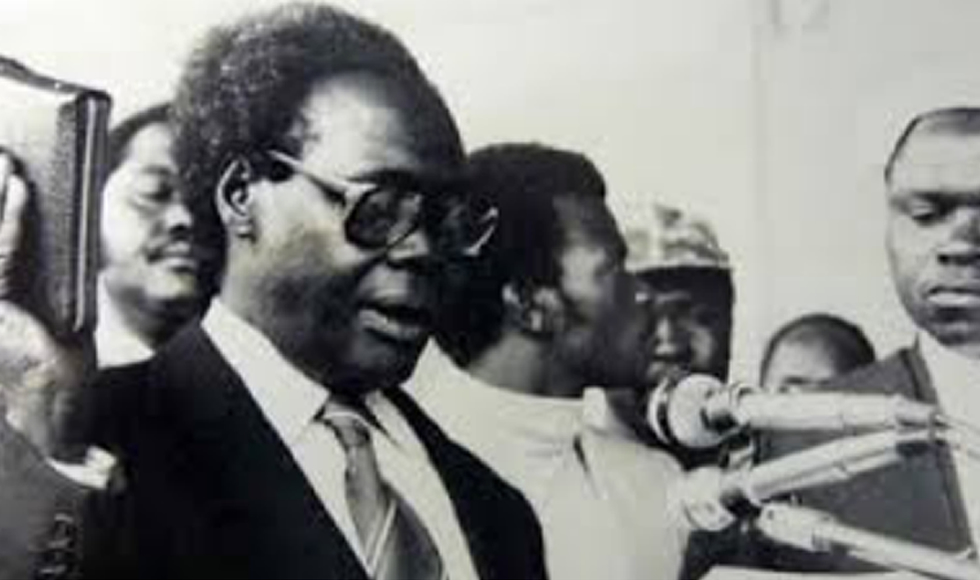
Obote Swearing in as President
Apollo Milton Obote ruled Uganda twice as the president of the Republic of Uganda. He became the president of Uganda in 1966 and he was overthrown in 1972 by Idi Amin Dada.
Obote got a chance to gain power in 1980 from a highly contested election that the opposition termed as rigged!
On 10th December, 1980, Apollo Milton Obote was sworn in as Uganda’s president, becoming the first African president ousted in a military coup to recapture the presidency.
Milton Obote took the oath of office Monday as president of Uganda nine years after he was ousted by Idi Amin and called on his countrymen to unite in building ‘a new future’ for the African nation.
Obote, 55, whose election was disputed by the opposition party, drove in his white Mercedes Benz to the steps of Parliament where the country’s new chief justice, George Masika — attired in red robes and a white wig — administered the oath.
‘In my life I have faced challenges and intimidating tasks,’ said Obote, who led Uganda from independence until overthrown by Amin in 1971. ‘But never have I been faced with formidable challenges such as we now face.’
Hundreds of cheering Ugandans waved posters of Obote and sang and danced as the government and military bands played the national anthem and the theme of the Uganda People’s Congress, Obote’s party.
‘We have problems, we have friends, we have the ability to do a number of things, we have natural resources,’ said Obote, who has promised to abandon past socialist views to rescue the country’s economy from the chaos of the Amin years.
‘It may be difficult but together it should be possible for all of us to rebuild Uganda.’
In Washington, the State Department declined comment on Obote’s election, saying it would rather await a report by a British Commonwealth observer team on alleged irregularities in the election.
Obote called upon the Democratic Party to accept last week’s national elections. But party leader Paul Ssemogerere stayed away from the inauguration and called a strategy meeting of the party’s national leadership.
The Democratic Party has charged that widespread intimidation and tampering with election returns helped Obote’s party win 69 seats in the 126-seat Parliament. The Democratic Party won 55 seats and two seats went to a smaller party.
Obote told the Democratic Party its ‘role as the opposition party is as challenging as the role of the UPC and the government. Our destiny is the same. We either rise or sink together.’
The new president, who spent nine years exiled in Tanzania during the Amin regime, said ‘We shall work for reconciliation, we shall insist on no revenge. The past is gone, we start a new future.’
Obote’s party won 17 seats — more than the margin of victory — after Democratic Party candidates were disqualified. While the disqualifications were based on flimsy legal grounds, the opposition party is expected to have little success in changing the results in court.
The army ousted him for the second time in 1985.
Read More
20 Basic Facts About Uganda
Uganda is a landlocked country found on the Eastern side of Africa. The country attained its independence in 1962 from the British. Kampala is the capital city of Uganda. Uganda’s current president is Yoweri Kaguta Museveni. Currently the country has an estimated population of over 40 million people. We have compiled 20 basic facts about Uganda that you need to know.
1. Uganda is called the pearl of Africa, a name bestowed by former British Prime Minister Sir Winston Churchill.
2. The Grey-crowned Crested Crane is Uganda’s official Bird.
3. Very good hospitality. Ugandans are very known for hospitality and the style of welcoming there guests
4. Uganda is ethnically and culturally a diverse country. It has over 56 tribes.
5. Agriculture is an important part of the country’s economy as it employs the majority of the Ugandans (almost 1/3rd).
6. Uganda has plenty of lakes and rivers.
Facts about Uganda Rolex
7. A Rolex isn’t a watch in Uganda – it’s a type of street food. A Rolex is egg wrapped in chapati with ingredients like vegetables.
The Uganda Rolex looks like this, get a bite if you are in Uganda
8. Ugandan women have one of the world’s highest fertility rates. The average fertility rate is 5.8 children per woman.
9. Home of gorillas. Uganda has over the half of the population of the world’s gorillas. Mountain gorillas are mainly found in Bwindi impenetrable forest.
10. Uganda is a landlocked country. The landscape is made up of savannas, mountains, and lakes. It is surrounded by Kenya, Tanzania, Rwanda, South Sudan, Burundi and Democratic Republic of Congo (DRC)
More facts about Uganda
11. Uganda is the size of the State of Oregon. The Population of the country is almost 10 times that of Oregon.
12. It is not uncommon for Ugandans to be late-punctuality is not very important. A person may arrive 30 minutes late, or sometimes even up to two hours after they were supposed to be there.
13. Uganda is the second largest producer of bananas in the world, falling second only to India. The country produces an estimated 11 million tons annually.
14. Uganda is the Tropical Fruit Basket of Africa.
15. Uganda’s official languages are English and Swahili. Luganda, a central language, is widely spoken across the country
16. As of 2018, Uganda is divided into 121 districts. Rural areas of districts are subdivided into sub-counties, parishes, and villages. Municipal and town councils are designated in urban areas of districts.
17. Boda – Boda Motorcycles are the fastest and most dangerous form of people Transport in Uganda.
Boda Boda rider with a passenger on one of Kampala’s roads
18. Mobile Money is the way most Ugandans send money to family, pay bills.
19. Uganda is the Youngest Country in the World with half of its population under the age of 14 years. The life expectancy for the average Ugandan is only early 50 years.
20. Ugandan ladies never call. They only beep if they want to tell you something.
The Mountain Gorilla Highlands
Uganda’s Gorilla Highlands stretch from Kabale area, Kisoro, Bwindi Impenetrable Forest, Mgahinga National Park to Kanungu area conveying most of Uganda’s beautiful scenic views.
Uganda is a haven for many natural attractions like the lakes from where one can enjoy the wonderful sights and sounds of various bird species such as Lake Bunyonyi, Lake Kayumbu and Lake Chahafi, Lake Mutanda and Lake Mulehe. It’s also park for mountain gorillas found in Bwindi Impenetrable National Park. It’s also a home to many primate species like the chimpanzees, golden monkeys which can all be tracked with the help of a well-trained tour guide.
Recently-developed trails offer some of East Africa’s most spectacular hikes across rural Africa, safe to explore per pedes apostolorum, by dugout canoe across the lakes or by mountain bike cross country.
Only a few parts of Uganda have been documented with trail descriptions, maps, and video maps, the latest tool available for wannabe visitors to this part of Uganda. Accommodation is now available from basic camping over home stays to luxurious lodges.
According to Miha, the head behind the gorilla highland project “The Gorilla Highlands initiative” was started in 2011 by Edirisa, a social enterprise based at Lake Bunyonyi. It is open to anybody interested in branding and promoting southwestern Uganda for the sake of rural development. It has established the ‘Gorilla Highlands’ brand as a flag to unify the region, connect local companies of all sizes into a network, and expand tourist expectations of what the area can offer. We are focused on innovative solutions to tell the world an engaging story about our part of Africa. The Gorilla Highlands initiative offer travelers, tour operators, the media, and development organizations a centralized and consistent service built on extensive local knowledge.”
He further noted, “We are tapping into a world-class web of professionals passionate about this region whose very first product, the Gorilla Highlands Interactive eBook, won a United Nations award in 2013. While the eBook showcases our deep knowledge of our home area, Gorilla Highlands is much more than that. We are about rural development empowered by culture. Our belief is that economic transformation in southwestern Uganda is only possible when we have respect for our cultural heritage, and when we properly utilize tourism as a tool to uplift the poor.”
In his notes, Miha Logar stated that “Our current biggest project is the Gorilla Highlands Video Map. It challenges tourists’ potentially negative preconceptions by giving video tours of places, lodges, and activities, revealing beautiful, comfortable, and safe environments. On the other hand, we don’t just do multimedia products. We tell our story of southwestern Uganda through tourism experiences as well – Gorilla Highlands Trails is a system of guided trips, taking from 5 hours to a week or more, including camping with rural families and with a special stress on the Batwa.
“Our tour itineraries already utilize Kigali as the airport hub; expansion of the Gorilla Highlands concept into Rwanda is planned for 2015.”
By using Kigali as the entrance airport helps to lessen / cut short the distance covered to reach the south western part of Uganda. It is also suggested to use due to the existence of the common tourist visa that entails visitors easy passage through Uganda, Rwanda and Kenya and it can be obtained at 100 USD.
In addition, this gives tourists a chance to enjoy the beautiful sights of “Land of a Thousand Hills” before crossing over to Kisoro / Katuna and Kabale via Cyanika border for the amazing spotlights of the South Western part of Uganda.
Uganda is now connected to the rest of the world by the top African, European, and Gulf /*8airlines daily and apparently known among Africa’s number one adventurous destinations since it’s a peaceful and Ebola Free State.
Gorilla Highlands offers pocket guides and last year launched the award winning e-book available from the Apple Store.
Read More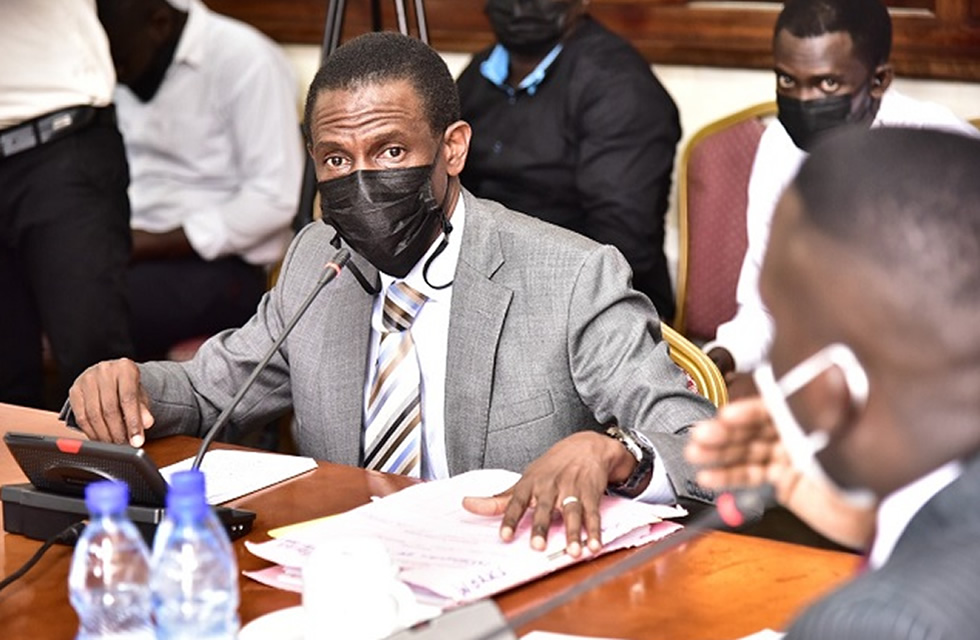
Uganda’s Attorneys General
The attorney general of Uganda is the principal legal advisor of Uganda’s government. The office of the attorney general is a cabinet level position. Here is the list of the different attorney generals that have served Uganda since independence.
P.J. Wilkinson, 1954-1961
C.G.F.F Dreschfield, 1961-1962
Godfrey Lukongwa Binaisa, 1962-1967
Lameck Lubowa, 1967-1971
P.J. Nkambo Mugerwa, 1971-1974
Godfrey S. Lule, 1974-1977
Matthew B. Matovu, 1977-1979
Dani Nabudere Wadada, 1979
George W. Kanyeihamba, 1979-1980
Stephen Omoding Ariko, 1980-1985
Samuel K. Kutesa, 1985-1986
Joseph N. Mulenga, 1986-1988
George W. Kanyeihamba, 1988-1991
Abubakar Kakyama Mayanja, 1991-1994
Joseph Kalias Ekemu, 1994-1996
Bert Magunda Katureebe, 1996-2000
Francis Joash Ayume, 2000-2004
John Patrick Amama Mbabazi, 2004-2005
Edward Khiddu Makubuya, 2005-2011
Peter Nyombi: 2011 until 2015
Fred Ruhindi: 2015 until 2016
William Byaruhanga: 2016 – 2021
Kiryowa Kiwanuka: 2021 – to date
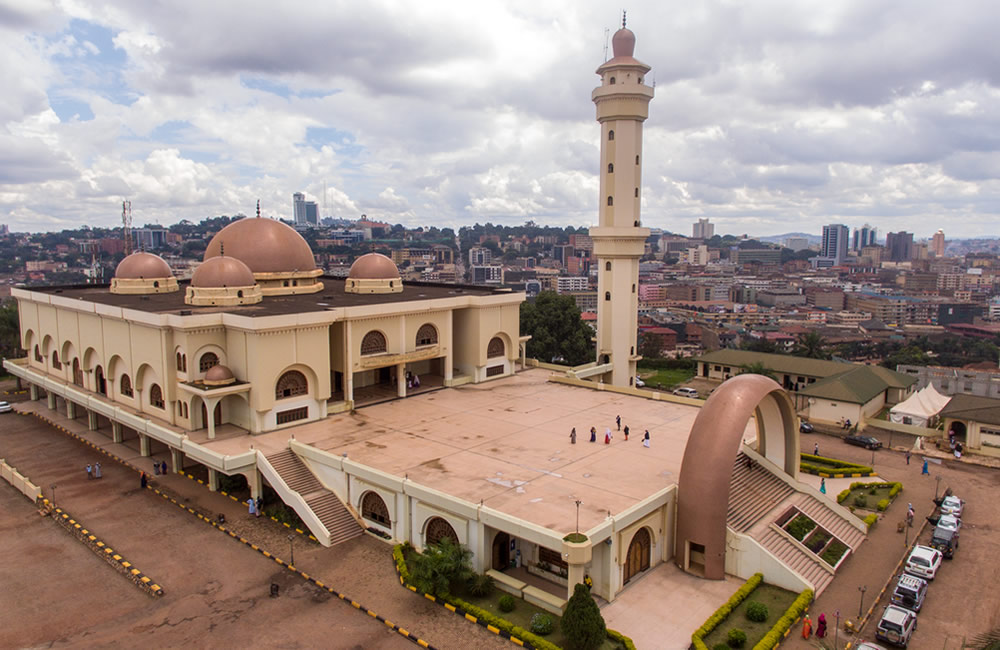
The Expansive Old Kampala Mosque
Though it boasts of a 200-year-lifespan, this will be a brief one, albeit a must-read. See, the Old Kampala Mosque is one of the places you must visit whilst out here in the City. For most adventurers in pursuit of religious tourism, it is just right— offering a sophisticated taste of elegance, architecture, and brilliant artistic inscriptions from all the six continents of the world
It should have been up and proud by the time the current Museveni-led government came into power, but the construction of the mosque stalled after Idi Amin Dada fled Uganda following the overthrow of his government in 1979. The politics of it all would be that the president then, Apolo Milton Obote who more Christine-inclined didn’t think this pertinent whilst Idi Dada Amin put it on his radar. Historians tell of how fast it was erected whilst Amin was on the throne and how quickly the construction came to a screeching halt under the Obote government and the others that followed.
But its savior, the fallen Muammar Gaddafi was decades away and would come to its rescue. Aside from offering an impressive history and culture, the house of worship which was named after fallen Libyan President Muammar Gadaffi has a distinctive Minaret that stands at over 100 feet atop old Kampala Hill and 1,210M above sea level. From here, adventurers can get some much-needed fresh air from the hot day plus the most breathtaking 360 degrees of Kampala and the seven Hills of Kampala. No other hill in Kampala offers such.
And yes, today, it is one of the largest mosques in the world and seats up to 15,000 worshipers and can hold another 1,100 in the gallery and over 2,000 in its lower terrace. Its lighting is a beauty to partake in the night, adding to a glorious scene that makes for Kampala’s hills by the night.
Travel Tip
Women need to be prepared to wear a dress and cover all their hair if visiting the Mosque (provided). While exploring the holy sanctuary is free for Ugandans, it comes at a fee of shs10,000 for non-citizens.
Read More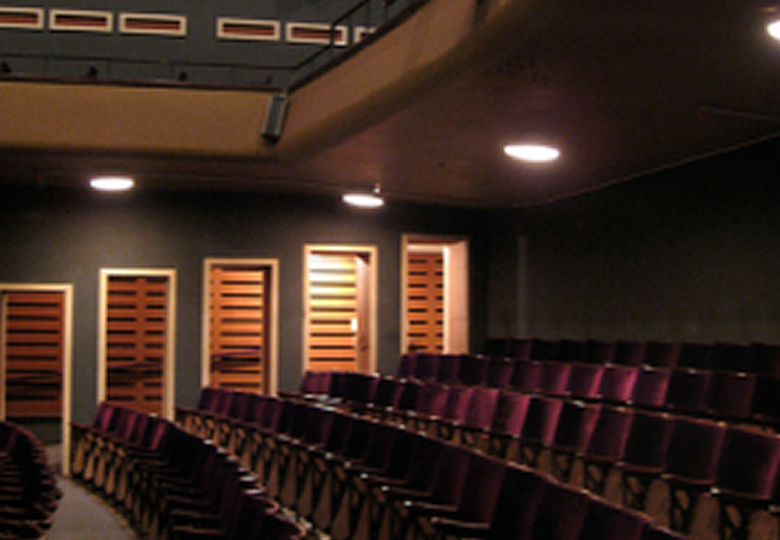
National Theatre Awards (1976-1993)
Source: The Uganda Almanac, 1997
1976
Best actor: Christopher Mukiibi, Ekinyumu
Best actress: Rose Mbowa, Hamlet
Best production: Ngoma Players, The City Game
Best script: Kings’ College Budo, Destined To Your Mother’s Breast
1977
Best actor: Aroma Sezzibwa, Enkomero Ya Byona
Best actress: Vivian Mbiire, Kasokka Mbirya
Best production: Masaka Dramactors, Ejjembe Lya Sessanga
Best script: Maya Dramatic Society, Keziya Yabyesombera
1978
Best actor: Sam Kagoda, Kaliisoliiso
Best actress: Deborah Sentumbwe, Amaka Mazibu
Best production: Namasagali College, Song Of The Bantu
Best script: Asiita Theatre Company, Engule Ya Kamukuukulu
1979
Best actor: Joseph Kayiru, Saamanya
Best actress: Stella Nanziri, Dan-Dina-Don
Best production: Namasagali College, Song Of The Gospel
Best script: Jinja Dramatic Society, Akafa Omukuto
1980
Best actor: Joseph Walugembe, Endless Nights
Best actress: Judith Naluggya, The Skin Of Our Teeth
Best production: Asiita Theatre Company, Ensolo Za Maziga
Best script: D. Kiwanuka-Sembali, Mulumba Omutukirivu Ne Banne; Fagil Mandy, Endless Night
1981
Best actor: Badru Ntege, Ndibassa Ekitta Bonna
Best actress: Halima Nassuna, Ekitangaala Mu Nzikiza
Best production: Black Pearls, Ekitangaala Mu Nzikiza
Best script: Simon Kawagga-Byansewa, Life After Death
1982
Best actor: Harry Matovu, Ennaku Y’Obugamba
Best actress: Domine Ngamije, Omuzadde N’Omwana
Best production: Namasagali College, Song Of Impi
Best script: Simon Kawagga-Byansewa, Life After Death
1983
Best actor: Stephen Ogwang, The Marriage Of Anansewa
Best actress: Jane Nansubuga, Ebweru Telemerwa
Best production: Makerere University Music, Dance and Drama Department, The Marriage Of Anansewa
Best script: Jacob Bulezi-Kasozi, Essanyu Lya Ssanyu
1984
Best actor: Actor unknown, Omugwetwa Noha
Best actress: Joyce Kikomeko, Lubwama
Best production: Linda Dramatic Society, Ngana Gumwoyo
Best script: Kabalega Secondary School, Behind The Reed Fence
1985
Best actor: Andrew Benon Kibuuka, Akasambattuko
Best actress: Teddy Nassuuna, Ejjembe Lya Gaboggola
Best production: Namasagali College, Land Of Make Believe Revisited
Best script: Uganda Music and Drama Society, Nalunga Wa Jjuko
1986
Best actor: Charles Wakhata, Abagiri
Best actress: Prossy Nassali, Agaali Amakula
Best production: Bakayimbira Dramactors, Agaali Amakula
Best script: Lugazi Dramatic Society, Embuga Ya Kiwandagala
1987
Best actor: Jackson Ndawula, Enjawulo Ye’mu
Best actress: Jacqueline Lule, At Mama Kapi’s
Best production: Linda Dramatic Society, Yee Ye
Best script: Student Theatre Company, The Rejection
1988
Best actor: Solomon Nkoyooyo, Liz
Best actress: Reste Kaddu, Fences
Best production: Unknown group, Fences
Best script: Christopher Mukiibi, Unknown script
1989
Best actor: Jenkins Oryem, Great Caesar
Best actress: Unknown
Best production: Unknown
Best script: Espaliers, Bazibu
1990
Best actor: Abbey Kakande, Musayi Gwange
Best actress: Agnes Nalubega, Omunala
Best production: Black Pearls, The Divided Family
Best script: Bakayimbira Dramactors, Omunala
Do You Want to Know About the Kasubi Tombs
Located on the Kasubi Hill with in Kampala at Uganda, the site of Kasubi tombs is an active spiritual area holding the burial chambers of the former four Kabakas of Buganda. Even today, it is religious place of rituals regarding the Ganda culture for the imperial family. Symbolic to the East African’s history and culture, these tombs are the exemplary masterpieces exhibiting the customary Ganda structural design. Undoubtedly, the site is designated as the UNESCO World Heritage.
History
Came into existence since 13th century A.D., the Baganda are the Bantu speaking people. According to them, the first Kabaka of Buganda was Kintu who is believed not to be dead but disappeared in the forest at Magonga. It is a traditional practice to bury the Kabakas in different site as a royal shrine along with the jaw bone – the home of his spirit at some other site.
Layout
The Kasubi hill holding the tombs is split into three main areas namely, the main Tomb area at the west, a region behind the tombs packed with buildings and grave yards, and a big area on the east for agriculture.
A wonderful gate house called the Bujjabukula marks the entrance, which is made of wooden columns handling the thatched roofs. Usually, guards used to hide in the house behind a visible reed partition all 24 hours to dominate the entry. From here, I reached a small courtyard holding the Ndoga-Obukaba, a circular home of the royal drums. Then, I entered the main courtyard (Olugya) protected by a reed fence, which contained several houses for the widows of the Kabakas and other traditional purposes. In this courtyard, you can see the spectacular main tomb building known as Muzibu-Azaala-Mpanga.
Muzibu-Azaala-Mpanga
Built in 1882 by Mutesa I, the 35th King and the first to be buried in Kasubi tombs, this main building is circular with a domed shape. I entered via a low wide arch edged by lavishly woven reeds. When I entered, the beauty of the thick thatched roof going down below the ground captured my mind. Inside, a huge bark cloth splits the ‘sacred Forest’, the home of the four royal graves namely:
- Mutesa 1:
Crowned from 1856, he was the most powerful king known for breaking the traditional rules. He was the first one to accept the foreign philosophy and adopted some Islamic practices. His palace was near the tombs where he was buried but without removing his jaw bone. - Mwanga 11:
Son of Mutesa and the last king of the independent Baganda, he was against the conversion of people to Islam and Christianity, which was favored by his father. He fought against the British forces following a defeat to exile him to the Seychelles Island where he died in 1903. He was then brought here. - Daudi Chwa II:
He was the son of Mwanga 11 who died in 1939 and was buried at Kasubi Tombs along with two predecessors strengthening the ritual importance of the site. - Muteesa II:
He was the son of Daudi Chwa II and was also buried here too.
The people believe that the spirits stay alive in the sacred forest. When a King or his family member dies, the other royal members and the people perform rituals to pacify the spirits by sacrificing animals and offering various gifts at the shrines.
However, only the widows and the royal members can enter the ‘sacred forest’. The internal area is decorated with drums, lance, armor, medal, and photographs of the buried Kabakas.
A thick carpet of lemon grass and palm leaves mats cover the floor. Symbolizing harmony and power, the huge wooden poles covered with bark cloth hold the entire edifice.
Read More